Located in the centre of Stockholm, Rörstrand Castle is perhaps one of Stockholm's least known (and most hidden!) castles. We live relatively close to the castle and almost every day we pass the large porcelain pile that reminds us of what was once the Rörstrand porcelain factory. One day we decided to explore the history of the castle and the factory. It was even more exciting than expected, not least because this turned out to be almost the last chance to see the inside of the castle.
Table of contents
Rörstrand in Stockholm
A few weeks ago, I showed my walk to work and all the beautiful animals we see along the way. But we do not only see animals on the road, but also a lot of other interesting things. Among other things, we pass the large porcelain pile that once belonged to the Rörstrand porcelain factory.
In the 1720s, the City of Stockholm authorised a company to build a porcelain factory below Rörstrand Castle. The shards of porcelain that lie here, many of them in the typical colours of white and blue, testify to the time when Rörstrand was one of Sweden's largest employers. We became curious about the history behind the factory and the castle and went on a quest for history!
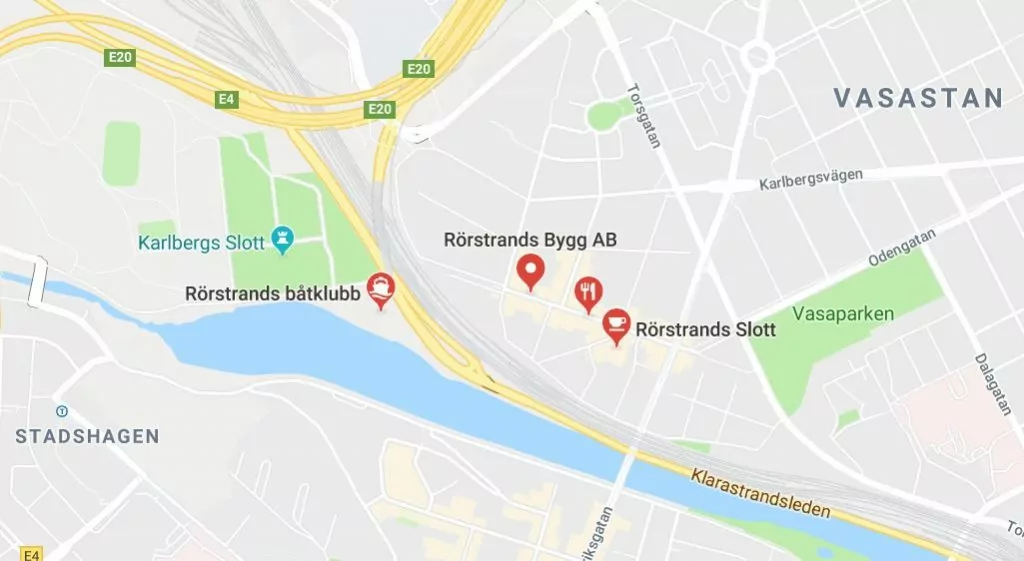
Stockholm's most secret castle?
Rörstrand Castle may be Stockholm's most secret castle. Its location right next to the hectic Sankt Eriksplan is central, yet no one seems to know that there is a castle here. When I tell friends and colleagues that I'm going to visit Rörstrand Castle on Rörstrandsgatan, they look at me in surprise. A castle, at Sankt Eriksplan?
Perhaps it is the case that you have seen the castle several times without ever realising that it might be a castle. The walls of the castle testify that this is an old building with a lot of history, but the house does not seem so big after all, where it is built together with the much more magnificent Filadelfiakyrkan. If there's any part of the castle you've noticed, it's perhaps the popular Rörstrand Castle Café, located at the entrance.
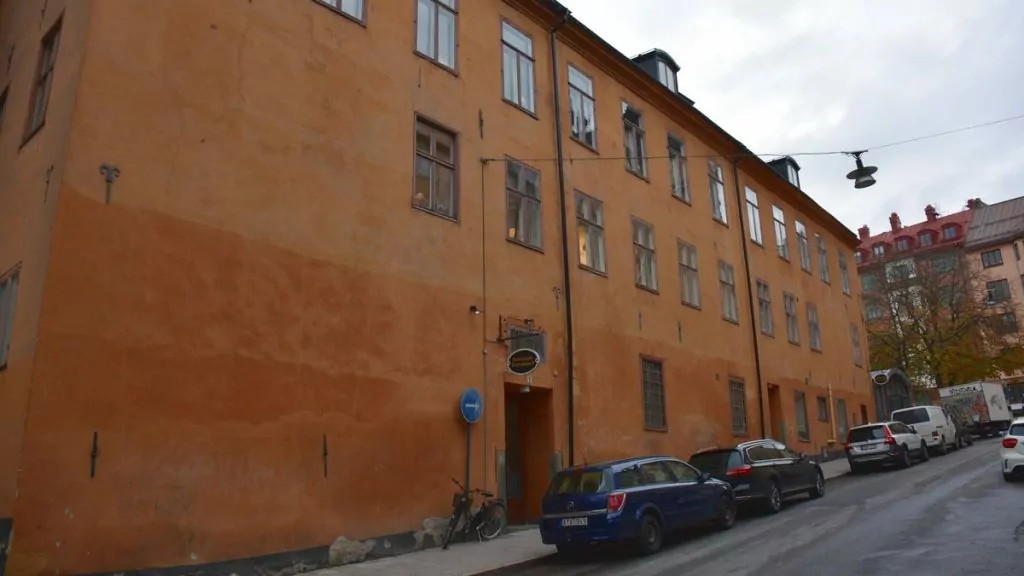
Guided tour of Rörstrand Castle
We get curious and call the castle to see if we can get a guided tour. We can, but we realise that we are calling at the last second. The entire castle operation is to be closed down, the castle café is to close and a folk high school is to move into the building.
The guide, Agneta, sounds a bit sad as she talks. 'There are only six weeks left until an entire era goes to the grave. Suddenly our visit and our report feel extra important. As if it is the last chance to see the castle and tell its story.
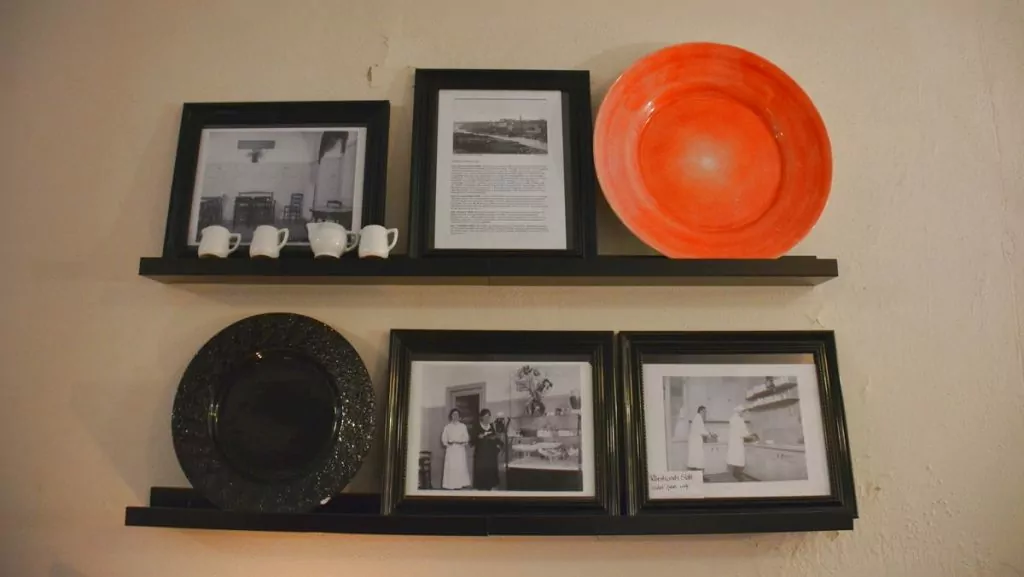
Dungeons and knight academy at Rörstrand Castle
We start the guided tour by going down into what were once dungeons in history. But we start the story much earlier than that! We sit down in one of the rooms in the 15th century cellar and let Agneta tell us how it all began.
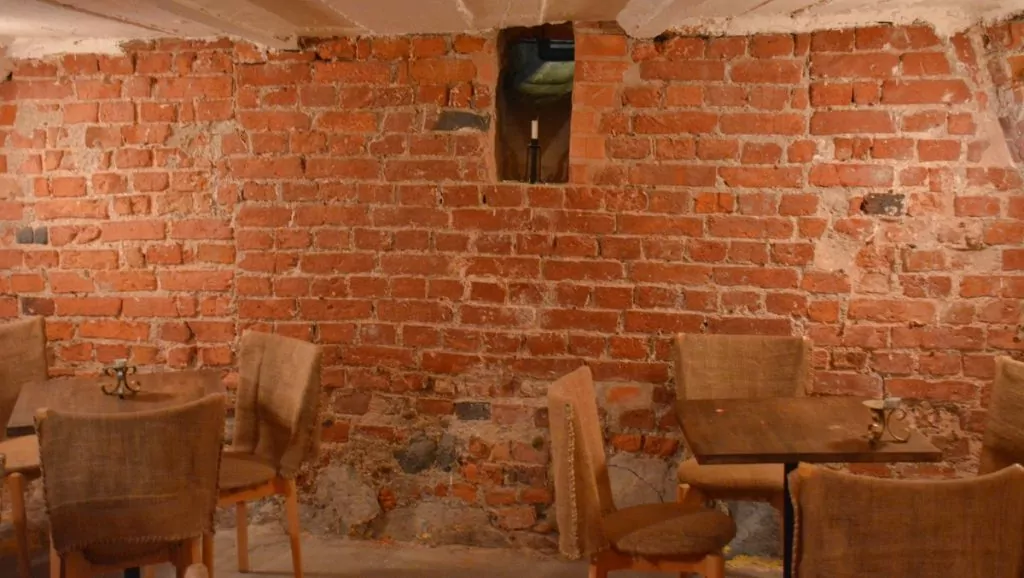
Rörstrand is mentioned as early as the 13th century, when Magnus Ladulås donated the Rörstrand area to Klara Abbey. In the 17th century, the main building, then called Stora Rörstrand, was owned by the wealthy Mårten Rosenstierna. He gave the building as a morning gift to his wife in 1635.
A little later, the building became the property of Queen Christina, and it was then that the house began to be referred to as a 'castle' - that was the name given to a building owned by royalty. Among other things, the Queen established a knight's academy "like the one in Paris", where the young nobility were trained in riding, fencing, dance, languages and other important arts.
During the Great Northern War in the early 18th century, Rörstrand Castle was used to house prisoners of war. And that is why we can talk about the dungeons of Rörstrand Castle!
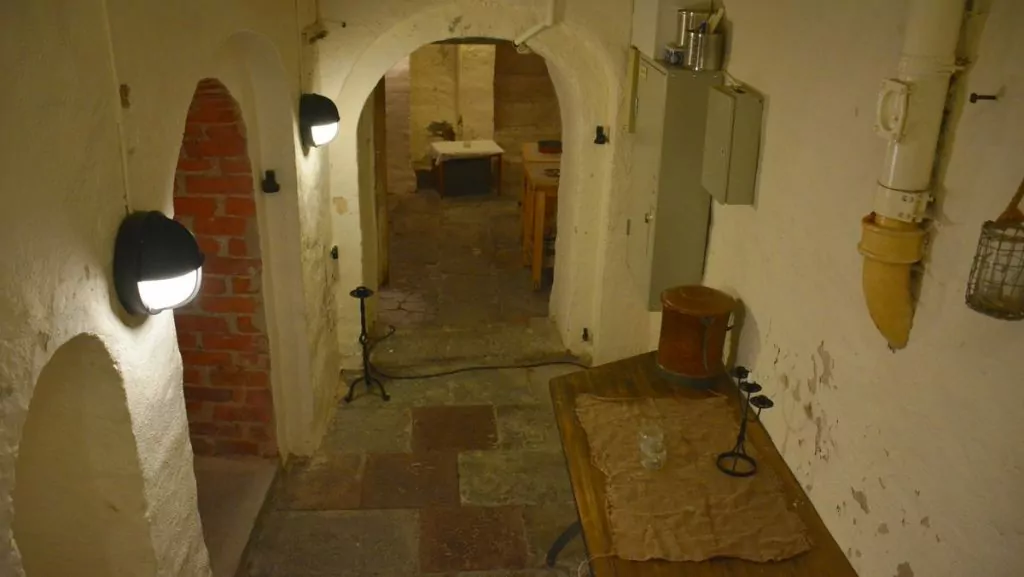
Tiled stoves and porcelain at Rörstrand Castle
When you emerge from the dungeons, you can visit the castle's many rooms, where you will be particularly fascinated by the beautiful tiled stoves. Many of the rooms can currently be used for conferences and meetings, but with the folk high school moving in soon, this will no longer be the case.
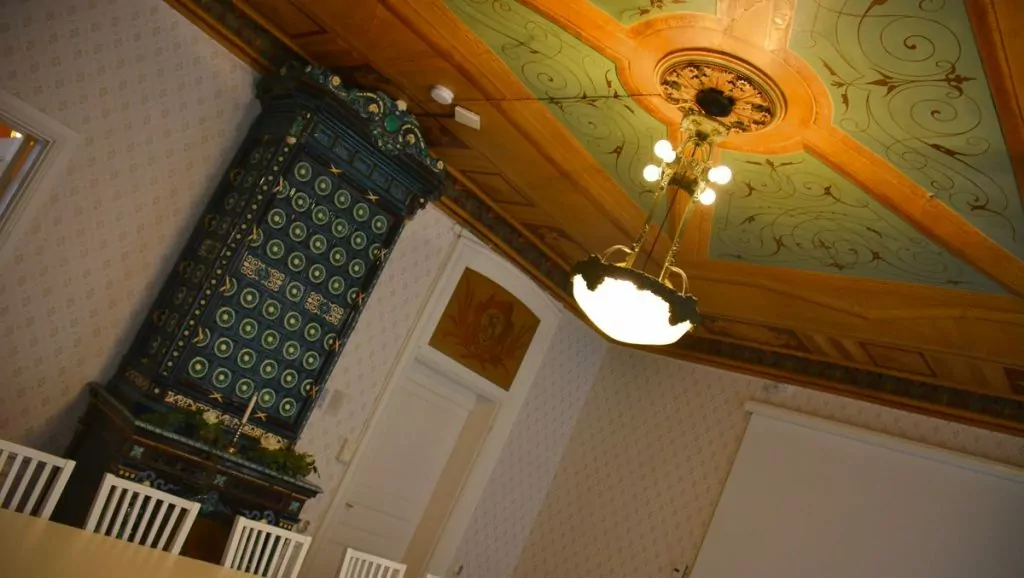
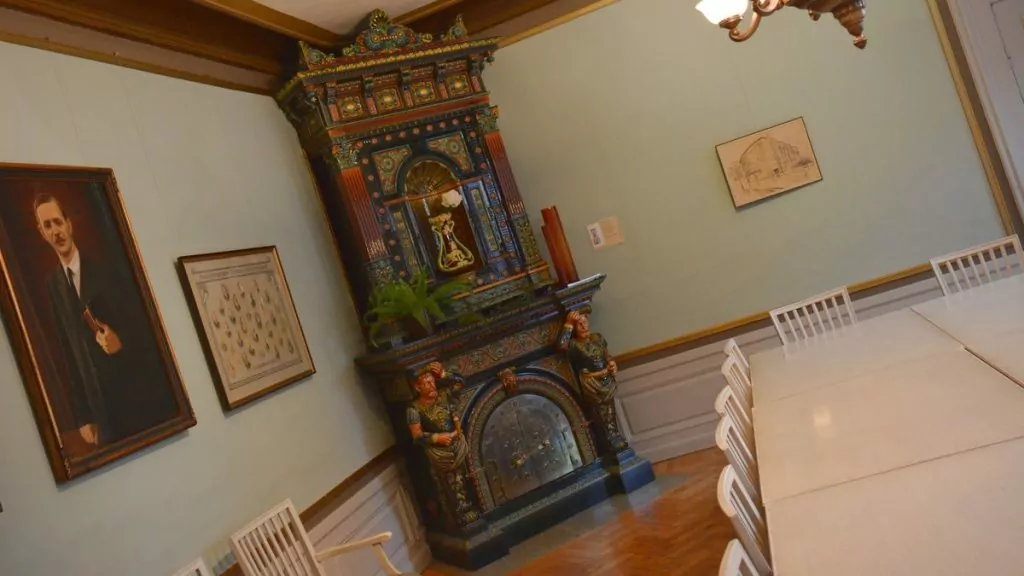
The premises also contain some porcelain, which is not surprising given that Rörstrand's porcelain factory was founded here. Almost 300 years ago, the Rörstrand company manufactured its first plate in Stockholm.
In 1726, the 'Swenske Porcellainsvärket' was founded, producing porcelain under the direction of the German porcelain maker Johann Wolff. This history makes the Swedish porcelain manufacturer the second oldest porcelain brand in Europe, after Meissen from 1709.
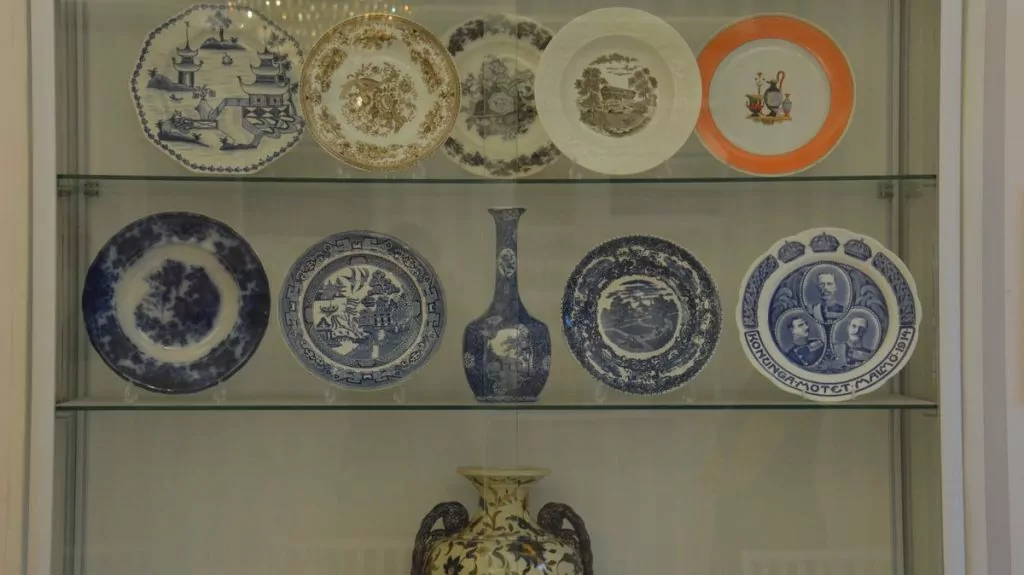
Rörstrand Porcelain Factory
When Rörstrand started manufacturing plates, porcelain became available to ordinary people, who previously ate on metal plates. The plates were initially made of faience and decorated in cobalt blue, often inspired by Chinese porcelain.
A little later, they developed their own typically Swedish designs and when the first competitor appeared at the end of the 1750s, they started labelling the porcelain with "Rörstrand". In the 1770s, the first tableware was launched: Sepia.
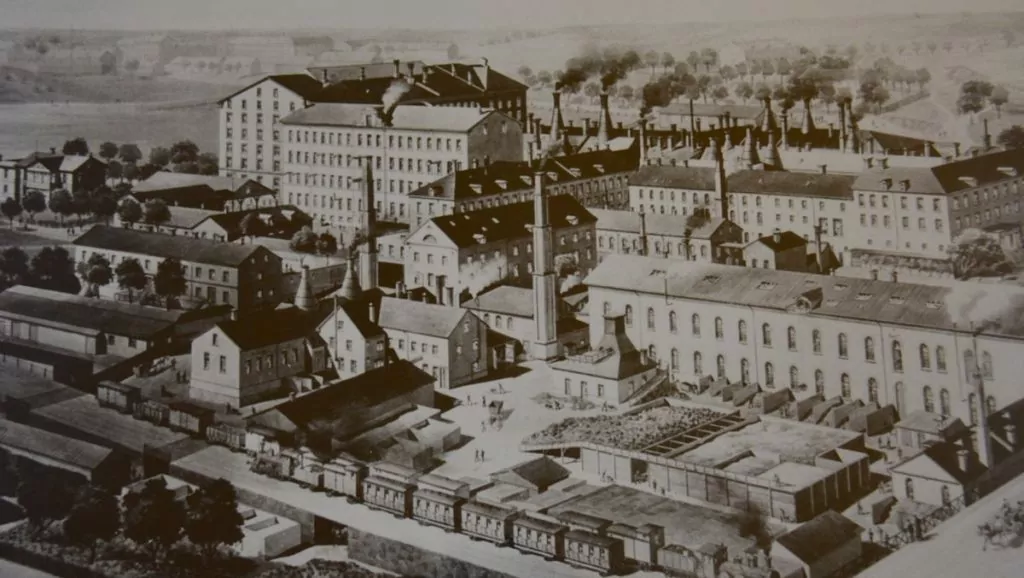
One of Sweden's largest companies
In the 19th century, Rörstrand got its first steam engine and began printing designs using copper plates, instead of using only hand painting. Large tableware became popular, often with inspiration from England. The factory grew and became one of Sweden's ten largest companies.
Conditions changed over time, however, and in 1926 the entire operation moved to Gothenburg, and a little later it was merged with Lidköping's porcelain factory. During the 20th century, many of Rörstrand's classics were produced, such as the Nationalservisen (Swedish Grace), Ostindia, Picnic, Mon Amie and Grön Anna. Today you can still see the remains of the factory in Stockholm, in the form of the large pile of porcelain waste preserved in Karlberg.
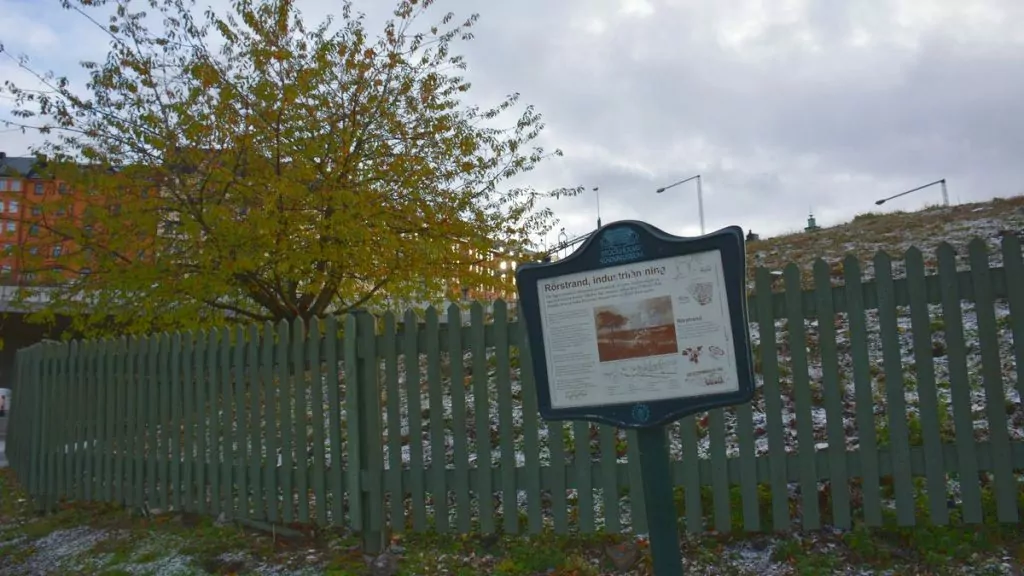
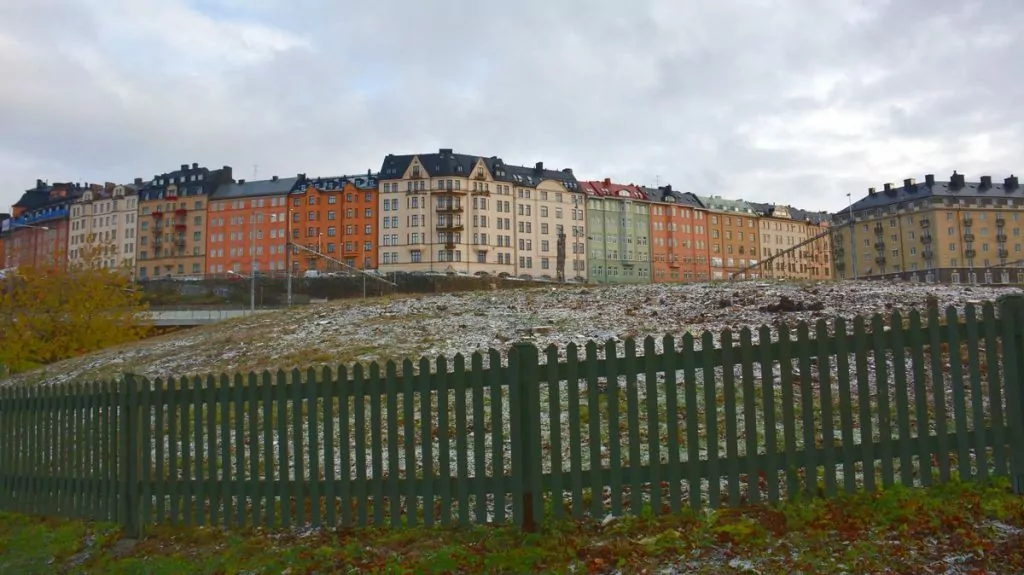
Rörstrand today
When the Rörstrand porcelain factory moved to Gothenburg, the castle and the neighbouring factory site were bought by the Filadelfia congregation in Stockholm. In 1930, the congregation built its church on the factory site and connected the castle to the church. The café and conference activities in the castle have been run by Rörstrands Slott AB, but soon the activities in the castle will be replaced by courses.
Rörstrand's porcelain factory was merged with Lidköping's porcelain factory and is now part of the Fiskars Group, but still sells porcelain under the name Rörstrand. There is a shop on Kungsgatan in Stockholm and you can also visit the museum in Lidköping.
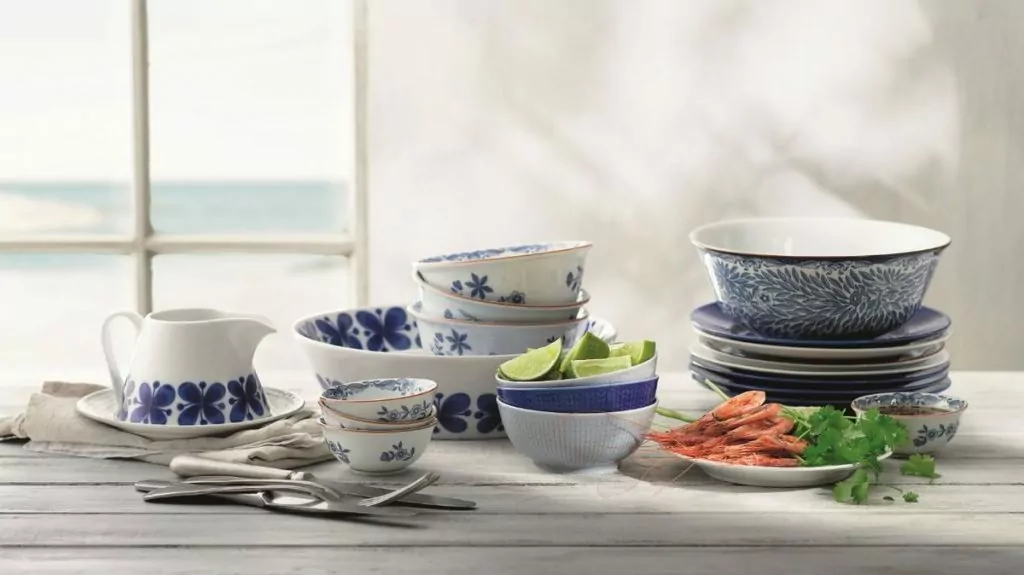
Rörstrand porcelain in pedestrian tunnel
Almost every day we walk through the pedestrian tunnel that connects Karlberg to Vasastan, under the railway. But even though we walk here every day, we have missed looking at the lamps. Each lamp is decorated with patterns from Rörstrand porcelain. So much of this area is reminiscent of the time that has passed.
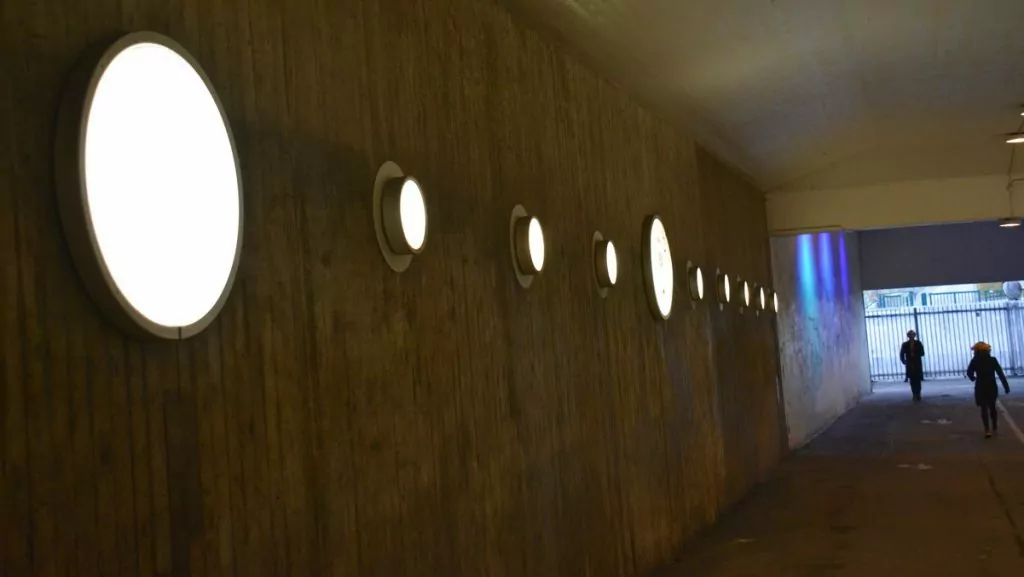
Have you seen the porcelain mountain reminiscent of Rörstrand, or perhaps you have some of the company's porcelain at home in your cupboards? Did you know about Rörstrand's castle at St Eriksplan?
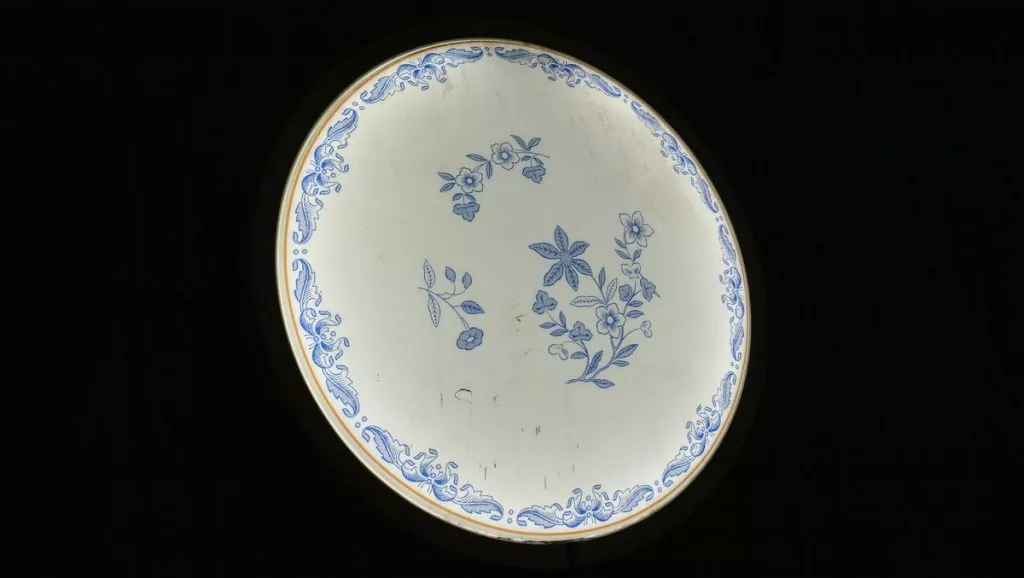


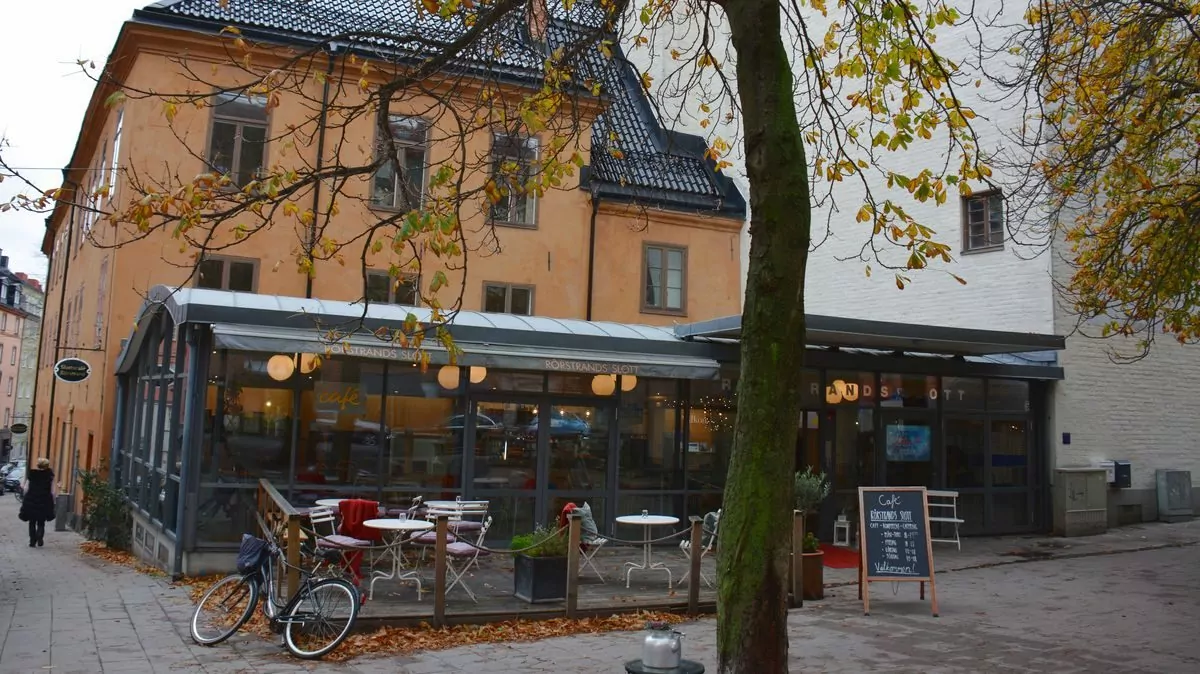






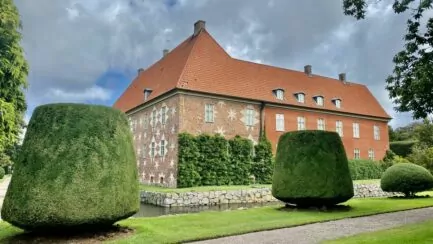
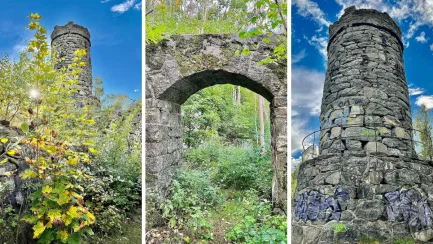



Matts Torebring says:
Thank you for a fantastic and, as usual, factual post. We have been to the Castle Café only a few times. However, we have loved to visit the Filadelfia Church, popularly known as "Filla". The visits have not been very many, because where should you park? when you are not very localised.
We have been following the debate on the location of the Folk High School in the newspaper Dagen for at least a couple of years. We can only "think" that it is a bit strange.
Rörstrands in Lidköping, we have cooperated with since the end of the 80s. It was almost heartbreaking when the news of the closure came. From a modest start, Fiskars is now our biggest supplier. I myself can hardly eat food without knowing what I'm eating if I don't recognise the plate.
The love for Lidköping, all the trips there with the motorhome, started with my interest in porcelain. Later we have said that Lidköping is one of Sweden's most pleasant cities to visit.
11 November 2018 - 7:55
Helena says:
How interesting to hear a little from your perspective Matts, who has better control over the activities of the Filadelfia Church! Or "Filla" then 😉 Interesting that you have Fiskars as a major supplier! I did not really know before, but now I understand that they have several well-known brands within their group.
11 November 2018 - 12:48
Lena - good for the soul says:
Hehe, no, I had no idea it existed! And when not even the many Stockholmers know that it exists, it does not feel quite as embarrassing. 🙂
But what a shame that they have to change their business. I understand it at the same time. If "no one" knows that it exists, there will be very little revenue, I can imagine.
I mean, that blue tiled stove! Absolutely incredible. Never seen anything like it!
Hug Lena
11 November 2018 - 8:07
Helena says:
The café seems to have been popular! But from what I understood, the Filadelfia Church needs the premises for other things ... Aren't the tiled stoves fantastic? 🙂
11 November 2018 - 12:49
Ama de casa says:
I wasn't lying when I said that unfamiliar castles are unfamiliar to me - I had no idea about that castle even though I had passed it on several occasions. What exactly defines a castle? That doesn't correspond to my idea of what a castle "should" look like.
Very interesting story and VERY sad that it will cease to exist in its current form! They should have advertised more that it exists (soon "existed") and organised tours and visits. I think most of us in our generation have some connection to Rörstrand's porcelain. I myself, for example, grew up with Gröna Anna.
What a shame that it's disappearing, but thanks for a great and interesting report!
Cool with the lights in the pedestrian tunnel too 😀.
11 November 2018 - 9:42
Helena says:
Haha, we also asked about what defines a castle 😉 According to our guide, it can be called a castle when it is in royal possession, and this building was during a period when Queen Kristina owned it. Glad you enjoyed the report!
11 November 2018 - 12:50
Lena in Wales says:
Wow, how interesting! I love tile stoves and porcelain.
It's a shame they are closing down, I would have loved to see it.
It's nice to brush up on your history skills too.
Many thanks for a very interesting post!
11 November 2018 - 9:45
Helena says:
Glad you enjoyed the post Lena! Very interesting to see the castle! 🙂
11 November 2018 - 12:51
Inga Magnusson says:
Interesting story about Rörstrand Castle. Since my son's family lived around the corner here for a long time, we have passed the building many times. I had reason to read about these buildings when I was doing genealogical research on my mum's side. In the early 1900s, this was really the outskirts of Stockholm, but in the decades that followed, a lot of new construction took place here and it became part of the city.
11 November 2018 - 10:24
Helena says:
Glad you read up on the buildings around here Inga! It's interesting to think back to what it might have looked like in the past, and how people lived then!
11 November 2018 - 12:52
Britt-Marie Lundgren says:
Thank you for an interesting post we read with great interest. For us, Rörstrands is so associated with Lidköping that we had no idea of the start in Stockholm and have never seen this castle.
We drink our morning coffee in Swedish Grace and eat our daily food at Claire de Lune (my parents' 'fine dining set', a wonderfully beautiful set with faint brushstrokes of mother-of-pearl along the edge.
11 November 2018 - 10:31
Helena says:
Glad you appreciated our post! Today, Rörstrand is very much associated with Lidköping, but also with this particular corner of Stockholm, I would say. Many things here have names reminiscent of Rörstrand, like Rörstrandsgatan for example. What fine porcelain you have! 🙂
11 November 2018 - 12:53
Ditte says:
What fun with a visit here. Very interesting to learn more about Rörstrand Castle. I know that the castle is here but have never visited it. How lucky you were to get a guided tour.
I have passed here many times since I lived in the neighbourhood. Röstrand's porcelain I have a tableware from and also cups and have visited the factory in Lidköping. I have visited the café and been many times to the Filadelfie church for various concerts.
11 November 2018 - 13:02
Reiselinda says:
Just as well that I never guessed any castles, because I would not have thought of this! Glad you got the opportunity to see and write about it at the last minute!
11 November 2018 - 14:31
BP says:
Well! You were so right when you wrote in a previous post that I didn't even know the museum existed. Nevertheless, I have visited the café as many times and even stood outside the museum without even thinking that it is a museum. Absolutely incredible! Thanks for the tour.
Oh the lights in the pedestrian tunnel - yes, I missed them too. My excuse there is that I only went there twice;-)
A great and interesting post:-)
11 November 2018 - 19:10
Maria/ Magnolia Magis says:
What fun! The start of Rörstrand! Then you got the whole story. ?Sad when such things are cancelled. The tiled stoves were really nice! Something I miss in the caravan ... ?
11 November 2018 - 19:19
Mr Nils-Åke Hansson says:
Then I guessed the wrong castle.
11 November 2018 - 19:42
Anna Lundqvist says:
If you want to read more about Rörstrand and Birkastan, I have written a book: "Rörstrand and Birkastan. From brickworks and castles to hip inner city neighbourhoods". Available at the library and at Sven Harry's museum.
02 February 2019 - 20:35
Anna Lundqvist says:
If you want to read more about Rörstrand and Birkastan, I have written a book: "Rörstrand and Birkastan. From brickworks and castles to hip inner city neighbourhoods". Available at the library and at Sven Harry's museum.
02 February 2019 - 20:37
Mr Frans Liljenroth says:
Yes, I know that castle well. The second after Stockholm Castle I learnt. Or maybe the first. My grandmother grew up there because her father and other relatives worked at the porcelain factory. The household is full of Rörstrand porcelain, various misprints that families in the servants' quarters could collect from the warehouse whenever they wanted.
Great to see pictures from inside the castle, which unfortunately I have never visited.
19 August 2021 - 21:40